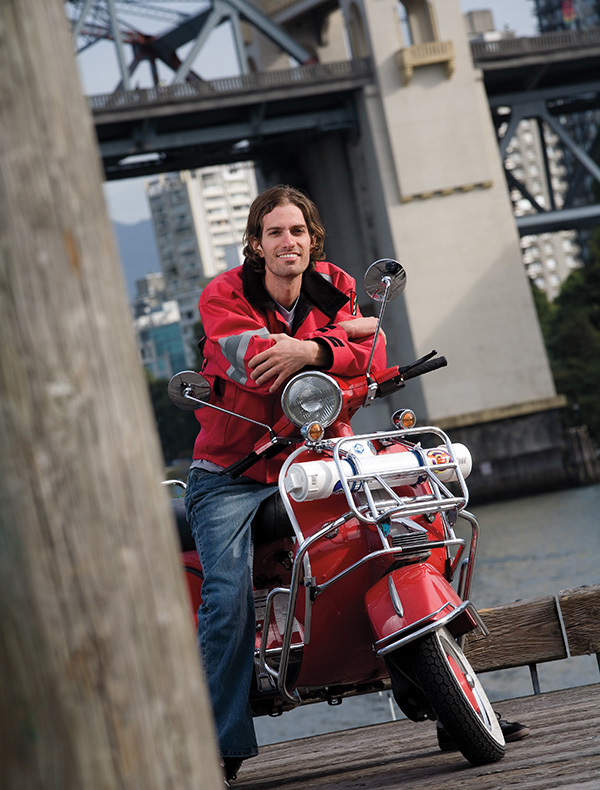Lesson 27. Light: Front Light
You’re still standing there, in front of that tree in the middle of the field, with the sun at your back. This is where too many well-meaning but boring instruction manuals will suggest you make your photographs.
When the sun comes from behind you, it hits your subject straight on, and the light bounces back and brings with it the picture of a tree in a field. The sun is not in the scene, so it’s easier to meter and expose. The shadows that are cast fall away from the sun, blocked by the very thing casting them, so there are no dark shadows to fool the meter, either. You raise the camera and make the photograph. It’s probably very well exposed due to the evenness of the scene. It’s just likely that it’s also boring. There are no shadows to create texture, and where there are no shadows there is less depth. The light is reflected and the colors are fine, but they could be much more alive.
Canon 5D, 146mm, 1/200 @ f/10, ISO 100
A front-lit portrait from several years ago. I’d do things differently now and wait for more interesting light.
It is here that most of us begin our photography, and rightly so. It’s good to become familiar with a baseline and get used to exposure fundamentals before things get more complicated by issues of dynamic ranges and exposure compensation. But if this is as far as we go, we’ll miss the chance to capture light from other directions, which is more challenging, to be sure, but also creates the possibility of more compelling photographs. Does this mean front light can’t be used, or is somehow “bad light”? Not at all. It just means the photograph needs to be carried by something else—some stronger gesture or amazing moment, perhaps.

